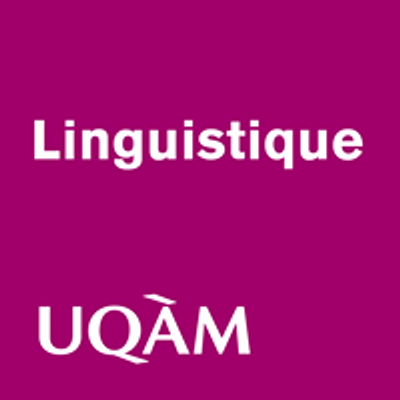« Structure and root meaning in the interpretation of transitive verb phrases » par Alison Biggs
Schedule
Wed Nov 06 2024 at 12:45 pm to 01:45 pm
Location
A-3316 400, rue Sainte-Catherine Est Montréal (QC) | Montreal, QC

Advertisement
Conférencière : Alison Biggs, Assistant Professor, Department of Linguistics & Languages, à l'Université McMasterTitre : « Structure and root meaning in the interpretation of transitive verb phrases »
Résumé :
The systematic relationship between syntactic structure and semantic interpretation is an important discovery about the organization of natural language. Argument interpretation is one domain where regular correspondence seems fundamental. For example, an important claim is that there is no language in which the syntactic subject of an active transitive verb is a Theme or Patient, while its direct object is an Agent or Causer, as in (1).
(1) Annie(Subject=Theme/Patient) blicked Ben(Object=Agent/Causer). --- Unattested
In this regard Marantz (1984) considers whether some syntactic item could idiosyncratically override (block or interfere with) regular syntax-semantics linking rules in structures like (1). While he rejects this, much work since has argued that lexical verb (Root) meaning can have exactly this function. A key example involves the long-standing view that transitive motion verbs trigger exceptional mappings between structure and interpretation, such as Theme subjects of transitive verb phrases as in (2). (2) is also argued to be resultative, and its availability has played a significant role in falsifying theories in which syntax constrains resultative formation (i.e. Direct Object Restrictions). Instead, (2) is compatible with theories in which resultative formation is only constrained by the lexical semantics of the verb (Wechsler 1997, 2005; Rappaport Hovav and Levin 2001, Beavers 2012).
(2) The wise menSubject=Theme followed the starObject=Theme/Patient to Bethlehem.
Exceptional argument structure mappings similar to (2) appear to occur with causatives of directed motion (She waltzed CrisObject=Agent around the room (Folli and Harley 2006, Biggs 2019)), out- prefixation (She outsold DrewObject=Agent (Mateu 2005, Ahn 2022)) and causatives of unergatives (Neu 2024, a.o.). In this talk I re-evaluate the properties of (2) within this broader context, showing that it has the formal properties predicted by syntactic configuration and not by accounts that rely on the lexical semantics of the verb/Root. In fact, the restrictions obeyed by (2) turn out to provide a new kind of evidence for constraints on the domains in which verb/Root-specific properties can interact with regular rules of syntax-semantics correspondence.
Advertisement
Where is it happening?
A-3316 400, rue Sainte-Catherine Est Montréal (QC), 400 Rue Ste-Catherine E, Montréal, QC H2L 2C5, Canada,Montreal, QuebecEvent Location & Nearby Stays:
